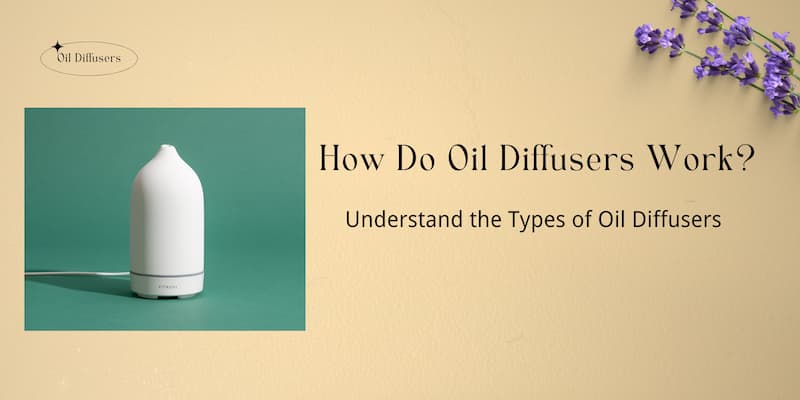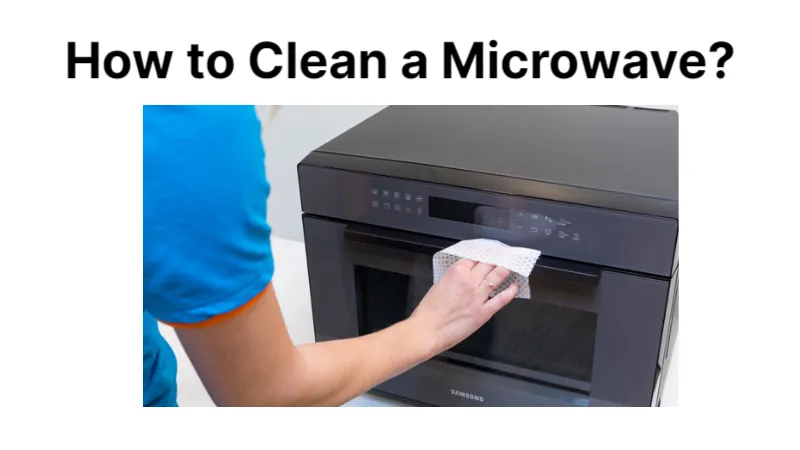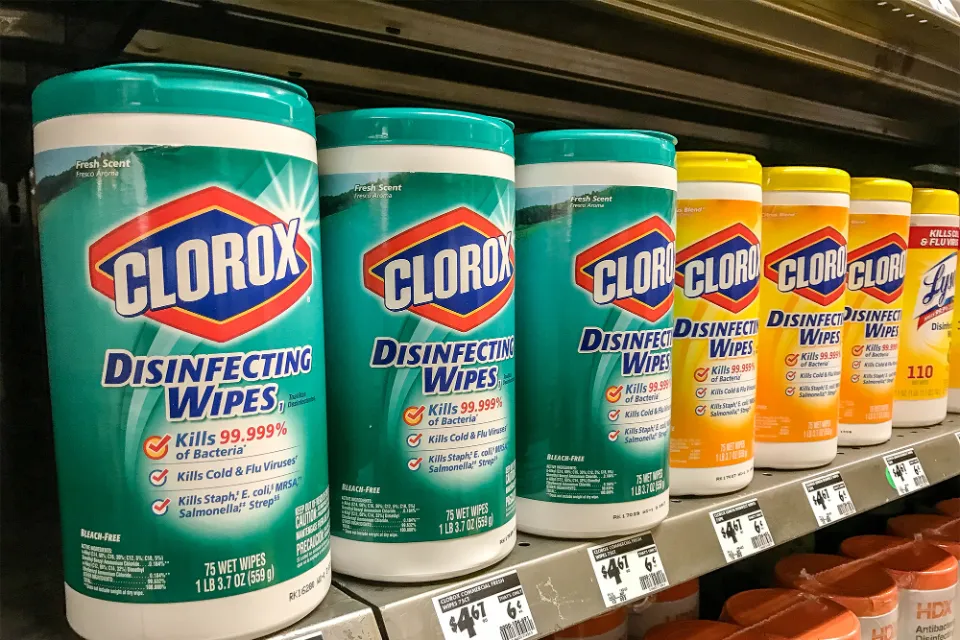Essential oil diffusers can be the difference between being a tense version of you and a calmer you by serving as a gateway to a more relaxing life! But how do oil diffusers work?
Simply put, essential oil diffusers work by dispersing essential oils into the atmosphere. This entails that you can breathe in the advantages and allow your body to assimilate them, which can promote relaxation and enhance your senses.
For instance, it can be the difference between relaxing after a stressful day and not. When you use a diffuser to use essential oils, the air is also purified while also being filled with a pleasant scent that is released by most essential oils.
Please read on for more detailed information.
What is a Diffuser?
A diffuser is a small device that emits a fine mist of essential oils into the air. There are a few different types, but they all function to give the user the therapeutic effects of the selected essential oil through aromatherapy. It enables faster inhalation so that the effects can be felt right away.
The best thing about diffusers is that they can be used wherever their advantages are needed, including at home, at work, and even in a car! Additionally, there are diffuser jewelry items like necklaces and bracelets available so that you can carry your essential oils with you wherever you go.
Simply put, diffuse means to spread widely.
Four Different Types of Oil Diffusers
The way that essential oils are released into the air by diffusers varies. Each has advantages of its own, but some also have drawbacks.
- Ultrasonic (Ultrasonic Vibration)
- Heat (Heat)
- Evaporative (Wind/Fan)
- Nebuliser (Force/Atomization)
Ultrasonic Diffusers
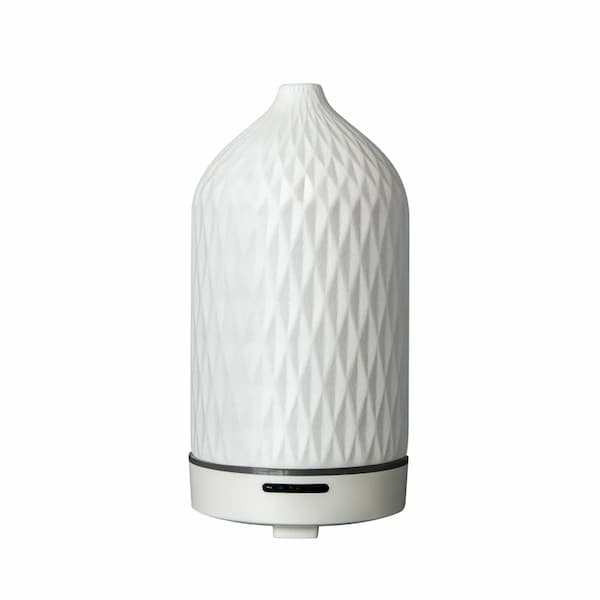
The vibrations of a plate in an electric ultrasonic diffuser produce ultrasonic waves, which in turn cause microscopic oil particles to disperse into the air. Depending on the desired scent and effect of the diffuser—whether uplifting, inspiring, soothing, or relaxing—the water tank must be filled as instructed in the manufacturer’s instructions for each diffuser. Then, add about 10 drops of essential oils.
The essential oils are combined with water vapour and released into the air as a very fine mist as a result of vibrations from the diffuser. Considering how quiet these diffusers are, many people do not find using them in an office to be overly distracting. Citrus essential oils like lemon, grapefruit, and orange as well as peppermint can aid in concentration.
Does An Ultrasonic Diffuser Use Heat?
You can benefit from the health benefits of the pure plant goodness because no heat is used and the ultrasonic diffuser’s adiabatic process, which means the oil changes states without heat, keeps the oil intact and prevents it from degrading. Due to the lower risk compared to a candle, ultrasonic diffusers are also a fantastic choice in areas with children.
Can An Ultrasonic Diffuser Be Used as a Humidifier?
A humidifier can also be used with an ultrasonic diffuser because it uses water. While diluting the oil with water can lessen its potency if you don’t like strong smells and would prefer the oil to last longer, this is a very suitable option.
Heat Dissemination
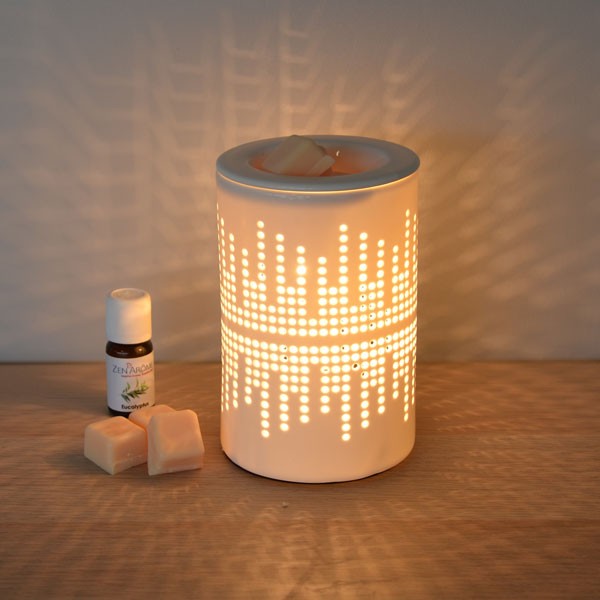
Heat is one of the oldest techniques for distributing the aroma of essential oils. Yes, the essential oils continue to evaporate, but this time, the evaporation is brought on by heat from a naked flame or another heat source other than the ambient air and environment.
Pottery Diffusers
The way these essential oil heat diffusers work hasn’t changed much since the times of the ancient Egyptians and Greeks who used them to burn Frankincense. This kind of diffuser is made of glazed ceramic and has a hollow interior where a candle or tealight can be placed. They have small dimples in the top surface that resemble wells and decorative holes in the body that let air circulate. The oil warms up and releases its fragrance while the candle burns. The only drawback to using this outdated technique to diffuse aromatherapy oil is that you can’t control how much heat gets to the oil; too little heat won’t produce a pleasant aroma, and too much heat will destroy the oil’s properties.
Electric Aromatherapy Diffusers
After the practical development of electricity, essential oil heat diffusers started to catch up with modernity. Diffusers for essential oils that run on electricity have a heating coil enclosed in a water-resistant casing. Both ceramic and durable plastic casings have a depression in the middle where you can put your chosen carrier oil or oil and water mixture. The fact that a thermostat regulates the coil temperature to prevent overheating is one advantage of how electric essential oil diffusers function. Numerous models also come equipped with timers that will automatically stop the heating process after a predetermined period of time.
Evaporative Essential Oil Diffusers
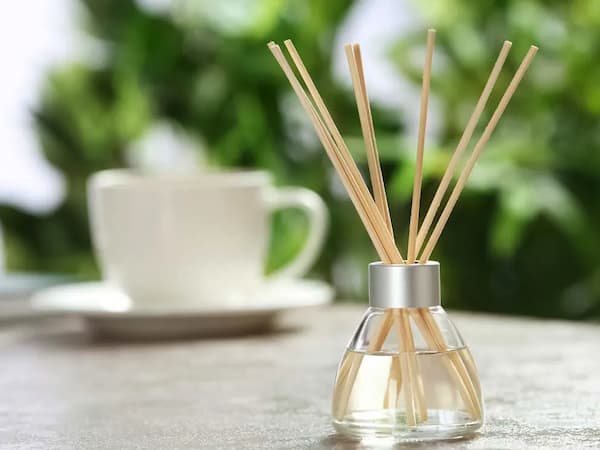
Warmth in the atmosphere causes moisture to evaporate into vapour. Everything from puddles after a storm to the ocean’s waters as they are heated by the sun goes through this largely invisible process. Simple diffusers for essential oils all operate through evaporation.
Reed Diffusers
A reed diffuser is a typical illustration of an essential oil diffuser that operates through evaporation. Lots of thin sticks of porous wood in a tiny glass container of essential oil are probably something you’ve seen on a shelf in your neighborhood store next to cans of air fresheners. When you place the sticks in the oil, they will begin to absorb it. The oil that has soaked to the top of the sticks evaporates due to the heat in the room, scenting the air.
As you might expect, a reed diffuser’s operation is not very predictable. Oil will evaporate more quickly in a warm environment. When your central heating is running at full capacity, you’ll soon find that all that’s left are some dry twigs and an empty bottle that is gathering dust because it no longer smells and you’ve forgotten it’s even there.
Evaporative Diffusers
Although they operate on the same evaporation principle, evaporative aromatherapy diffusers are a little more sophisticated in terms of technology. A small battery- or electric-powered fan is housed in the diffuser’s base. The fan creates a soft breeze inside the diffuser that blows through a pad you soak in essential oils. Oil evaporation is brought on by airflow through the pad. You can turn an evaporative essential oil diffuser on and off whenever you like, which gives it a significant advantage over a reed diffuser.
Nebuliser
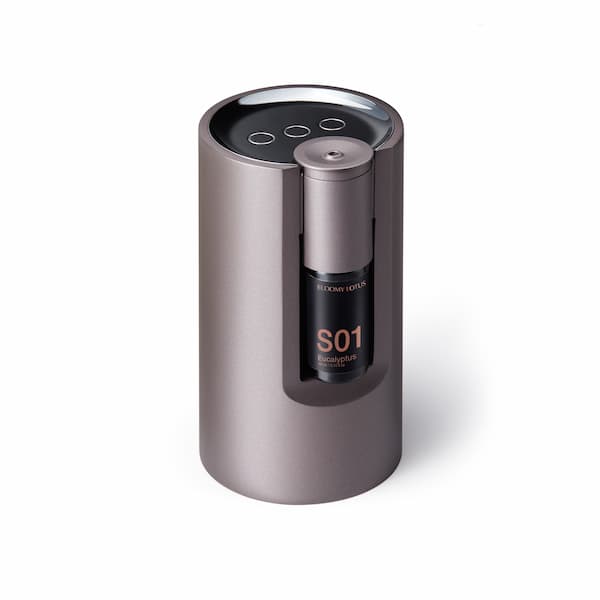
The purest form of essential oils are supposedly released when using a nebulizer in aromatherapy. Similar to a perfume bottle, the nebulizer process breaks down the oils into atoms, resulting in greater dispersion of the essential oils and a guarantee that they will penetrate every pore. While less portable, nebulizers are comparable to inhalers. They can be used for longer periods of time and are particularly helpful in emergency situations to administer medication to help a person breathe or to administer antibiotics. They are used to administer medication to clear your airways or to treat infections.
How Are Nebulisers Used at Home?
Nebulizers don’t need heat or water, which is a huge advantage. Nebulizers deliver a very concentrated stream, allowing the body to quickly benefit from the medication. As a result, they may be advised for people with asthma or other respiratory conditions who want to work in aromatherapy or enjoy the benefits at home. In comparison to an inhaler, the nebulizer enables a greater amount of medication to flow into the lungs over a longer time.
You might also be curious about Aera Diffuser Review, so should you get it?
The Benefits of Using An Essential Oil Diffuser
Using essential oil diffusers is an excellent substitute for candles and a wonderful way to help you unwind, recharge, and enjoy the therapeutic effects of aromatherapy. One of the best methods for getting essential oils into your bloodstream and moving around your body is through aromatherapy, according to some experts. This aids the limbic system, which manages our emotions, mood, and memory.
Effects of aromatherapy include:
- Relax, calm & destress
- Stimulate & refresh
- Uplift & energise
- Maintain healthy muscles & joints
- Improve focus
- Aid digestion
Essential oils can be used in a plethora of ways for a more natural way of life. If you have trouble falling asleep, try some calming lavender, vetiver, cedarwood, or frankincense. Try some cardamom, wild orange, peppermint, ginger, or fennel if you want to support your digestive system.
Along with the scents, adding water to a diffuser transforms it into a temporary humidifier, which is wonderful for people with dry airways.
Many of these essential oils also have benefits that you can get from using atomizer sprays, roller bottles, skincare products, or creams or serums.
Are There Any Downsides to Diffusers?
Diffusers are generally safe, but there are a few things to be aware of before using one.
To begin with, essential oils were created to be extremely potent. While this contributes to their greatness, if not used properly, it can also make them potentially dangerous. Diffusers are excellent for dispersing essential oils into the air, but they shouldn’t be left on for too long.
Electrical safety is the only additional consideration. There is always the possibility of fire or electrocution because some of the diffusers need a power source to function. In addition, to lessen the chance of chemical burns, young children should always be closely watched around them.
Read about Humidifier Vs Diffuser: How to Distinguish?
How to Use a Diffuser the Right Way?
An oil diffuser can help you feel as though you are residing in a spa, which is what we are all about. “If you have not had a reaction to a short exposure to a particular essential oil it would be fine to try having the diffuser on overnight while sleeping,” says Peters, if you have any health issues, talk to your doctor to find out if using an oil diffuser is safe for you.
Stop using if you get a headache, a sore throat, or you start to get short of breath. Keep essential oils out of reach of children and wait 12 months (or 30 months for peppermint and eucalyptus) before diffusing them near infants.
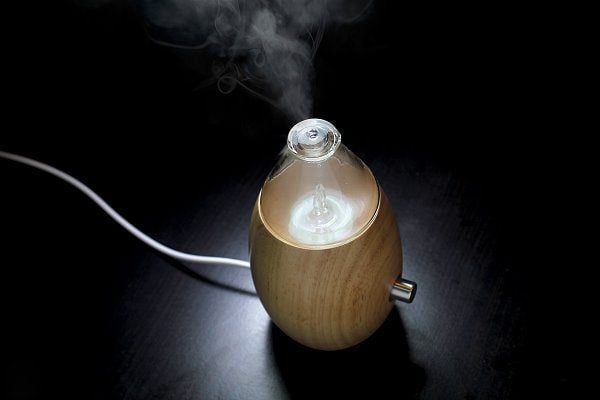
Clean Your Diffuser
Diverse oil diffuser types necessitate cleaning routines, as was already mentioned. Diffusers don’t require cleaning after every use. “I like the way a little residue from the previous oil blends with today’s scent,” says However, Benjamin, a quick cleanup every day can’t hurt.
If you feel so inclined, reevaluate your daily intentions while you’re cleaning out your diffuser. Before you begin, just make sure everything is unplugged. As you want to avoid using harsh cleaners, gently pour out any remaining water and clean the tank with a damp cloth and natural soap. You can use a Q-Tip dipped in alcohol to clean the mister on your diffuser. If you like, you can occasionally deep clean your diffuser by running it with water and a few drops of vinegar. When finished, make sure to rinse and dry all of your equipment.
Common Essential Oils for Diffusion
- Lavender – Lavender’s versatility makes it a fantastic essential oil to use in a diffuser. Lavender has a variety of uses, but it may be best known for promoting mental clarity and easing tension and stress. Lavender is also thought to be both antibacterial and antiseptic, so releasing it into the air can aid in the fight against germs.
- Oregano – Another essential oil that is effective at warding off germs is oregano, largely because of how potent it is. Like lavender, oregano is said to have antibacterial, antiviral, and antifungal properties. The only drawback is how potent oregano’s aroma can be. Furthermore, it is not known to be safe for infants, women who are pregnant, or nursing mothers.
- Citrus – There are numerous citrus essential oils available, including bergamot, orange, lemon, and lime. Citrus essential oils are ideal for the diffuser due to their incredible antibacterial properties and the ability of their fresh, fruity, bright scent to elevate mood.
- Peppermint – In addition to having a wonderful aroma, peppermint also purifies the air. When diffused, peppermint essential oil can help with a wide range of problems, but it is typically used to treat nausea and ease headache pain. To help focus on whatever specific issue you have, it is also great when combined with citrus or lavender.
- Ginger – Antibacterial, antiseptic, and antimicrobial qualities are present in ginger essential oil. That makes it great for treating nausea, digestive problems, pain relief, and even upper respiratory issues like coughs and the common cold. It also smells fantastic!
- Eucalyptus – Eucalyptus is one of the best essential oils for respiratory problems, to speak of. Its fresh aroma is said to be mentally stimulating and can be diffused to relieve cough and congestion.
- Cinnamon – Antiviral, antifungal, and antibacterial properties of cinnamon essential oil are well known. Since someone in the house is sick, it makes for excellent diffusing. Additionally, especially when combined with orange, it has a lovely, merry holiday aroma.
Last, How Do Oil Diffusers Work?
So, how do oil diffusers work? The essential oil diffuser’s basic operating principle is to release the oil into the atmosphere. This entails that you can breathe in and take these advantages internally, which not only promotes relaxation but also has a miraculous impact on your senses.
The post talked about four types of oil diffusers and how do they work. If you have any questions, please leave a comment.
I really appreciate your reading.
